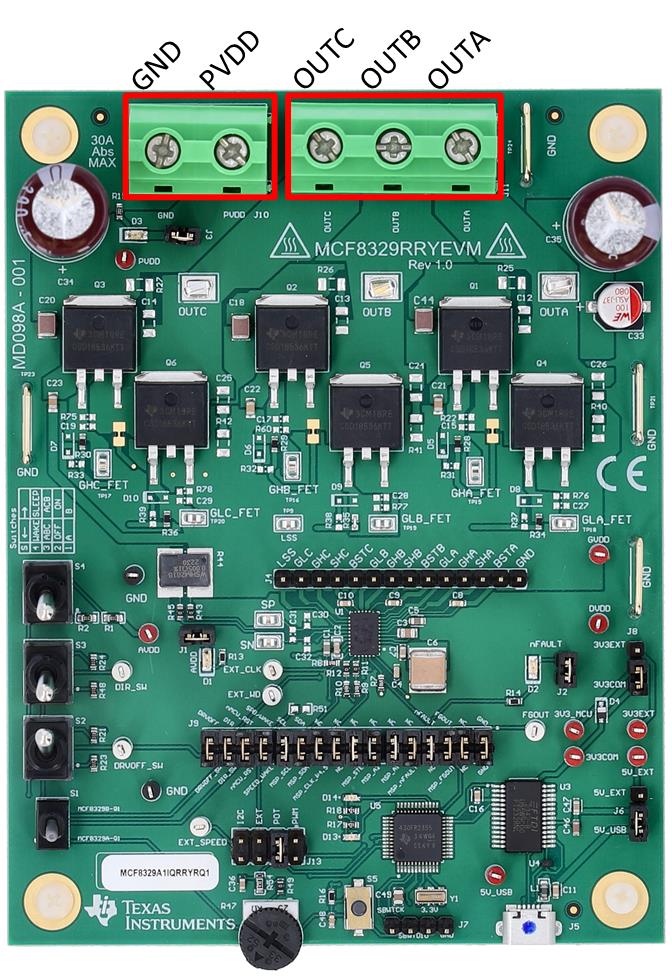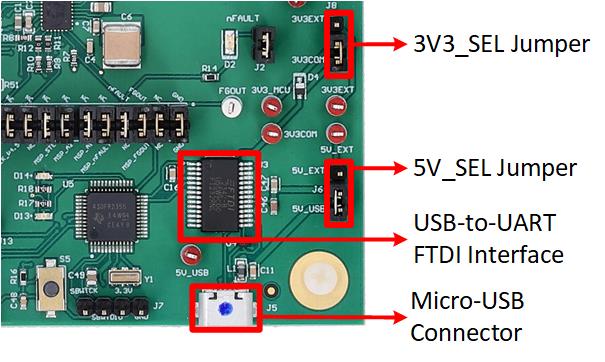SLLU383 October 2024
2.4 Connection Details
The specific connections that must be made to the MCF8329RRYEVM to spin a 3-phase sensorless brushless-DC motor are shown in Figure 2-3.
Connect a 4.5V to 60V power supply to the PVDD and GND terminals on connector J10.
Connect the three phases of the BLDC motor to the A, B, and C terminals of the screw terminal connector J11 or to the OUTA, OUTB, and OUTC test points.
 Figure 2-3 Connections from Motor to
MCF8329RRYEVM
Figure 2-3 Connections from Motor to
MCF8329RRYEVMWhere the micro-USB cable is plugged into the MCF8329RRYEVM to provide communication between evaluation module and GUI is shown in Figure 2-4. The USB data and 5V power from the USB is converted, by the FTDI chip, into UART data and 3.3V power which is used to power the MSP430FR2355 microcontroller. The 5V from the USB power is limited to 500mA and the 3.3V from the FTDI chip is limited to 30mA. To supply more current to these power rails, set the 5V_SEL jumper J3 to 5V_EXT and set the 3V3_SEL jumper J5 to 3V3EXT and connect the external supply to the 5V_EXT and 3V3EXT test points.
 Figure 2-4 Micro-USB Connector and
USB-to-UART Interface
Figure 2-4 Micro-USB Connector and
USB-to-UART Interface